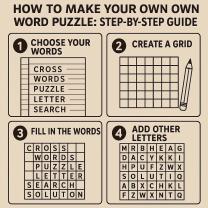How do you write a Punnett square worksheet?
Creating a Punnett Square worksheet is a great educational tool for teaching genetics and understanding the inheritance of traits. Here's a step-by-step guide on how to write a Punnett Square worksheet:
Define the Objective:Determine the specific genetic traits or concepts you want to teach with the worksheet. Be clear about the learning outcomes you want to achieve.
Select Genetic Traits:Choose one or more genetic traits (e.g., eye color, flower color) to include in your Punnett Square problems. These traits should be simple enough for your target audience to understand.
Create Problem Scenarios:Develop genetic problem scenarios that involve the selected traits. These scenarios should include information about the parental traits and the type of inheritance (e.g., dominant-recessive, codominance) you want to illustrate.
Design Punnett Squares:For each scenario, design Punnett Squares where students can fill in the genotypes of the parents and predict the possible outcomes for offspring. Include empty Punnett Squares for students to complete.
Provide Clear Instructions:Write clear and concise instructions for each problem, explaining what information students need to enter into the Punnett Squares. Ensure that you guide them through the process step by step.
Include Visual Aids:Add diagrams or illustrations to help students visualize the traits and understand the Punnett Square concept better.
Offer Variety:Create a variety of problem scenarios with different levels of complexity. Start with simple monohybrid crosses and gradually introduce more complex genetic concepts as students progress.
Include Answer Keys:Provide answer keys or solutions for each problem. This allows students to check their work and ensures they understand the correct outcomes.
Formatting and Presentation:Make the worksheet visually appealing and easy to follow. Use clear fonts, proper spacing, and attractive graphics.
Test the Worksheet:Before using the worksheet with students, test it to ensure that the problems are accurate and that the worksheet effectively achieves the intended learning objectives.
Review and Edit:Review the worksheet for any errors or ambiguities. Edit it as needed to improve clarity and accuracy.
Feedback and Revision:After using the worksheet with students, gather feedback to identify areas that may need improvement. Revise the worksheet accordingly.
Remember to tailor the difficulty level of your Punnett Square worksheet to the age and knowledge level of your target audience, whether it's elementary students, high school biology students, or even college-level genetics classes.













